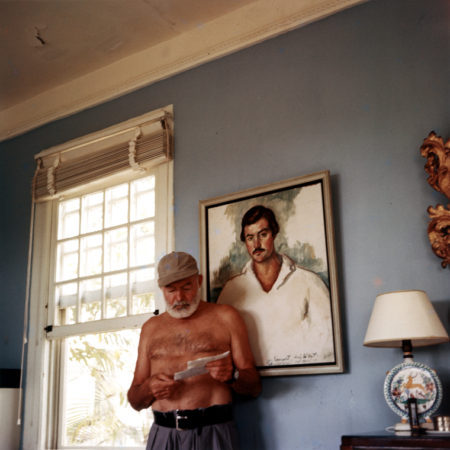The Roots of Hemingway’s Style

Ernest Hemingway’s writing style is always being described as “distinctive” and “muscular.” It’s easy to see why. He avoided adverbs and used strong verbs and short, declarative sentences. How he polished and perfected his style is, as you imagine, a more difficult question.
Earlier this month, PBS ran a three-part documentary on “Papa,” who died a few weeks shy of his 62nd birthday in 1961. In a review of the series, New Yorker critic Hilton Als traced the roots of Mr. Hemingway’s technique to the writer Gertrude Stein, who was known for her lack of commas, adjectives and depictions of emotion.
“Hemingway’s famously muscular prose was born of admiration for a middle-aged lesbian’s sui-generis sentences and paragraphs.”
This is an understandable claim. Mr. Hemingway became friends with Ms. Stein in Paris after he asked the writer Sherwood Anderson to write a letter of introduction for him. To my surprise, Hemingway scholars have long debated Ms. Stein’s influence on his writing, especially his early years, 1921 to 1924. I had thought he refined his prose from his years as a cub reporter.
Even so, it seems to me the New Yorker‘s Als’ article indulges two half-truths. “Papa” did more than admire (and seek to imitate) Ms. Stein’s technique. He saw her as a mentor. As author Kirsten Nath wrote in 2005,
Stein taught Hemingway about structure and composition with the example of cubist paintings as a guide and model for the organization of poetry and prose. Having in mind that he could use his teachers, Pound and Stein, for his career, he readily gave them his work for revision and accepted their advice and recommendations concerning style and publication. In journalism Hemingway had already developed his declarative style, which he refined with stylistic elements acquired from Stein.
Critical feedback is not just something nice to have for an aspirant in a craft or profession. It’s well-nigh indispensable, as the late Anders Ericsson, professor of psychiatry at Florida State, showed. It helps you stretch beyond your existing capabilities. While you may be good, someone is better. Why not learn from her?
Mr. Hemingway’s tutelage under Mr. Hemingway was not the sole or even main reason for his easily recognizable words and phrases, however.
His newspaper days were key, too, and much more than Mr. Als says. Mr. Hemingway was a reporter for nearly five years—half a year with the Kansas City Star and four years as a foreign correspondent for the Toronto Star. He did this all before the age of 30, formative years for anyone, especially a writer.
Think of the famous opening of his first novel, The Sun Also Rises, with its spare, lean prose.
Robert Cohn was once the middleweight boxing champion of Princeton. Do not think that I am very much impressed by that as a boxing title, but it meant a lot to Cohn. He cared nothing for boxing, in fact he disliked it, but he learned it painfully and thoroughly to counteract the feeling of inferiority and shyness he had felt on being treated as a Jew at Princeton.
Mr. Hemingway himself acknowledged the influence of reporting. In 1958, The Paris Review ran the following exchange between him and writer George Plimpton.
Plimpton: Would you suggest newspaper work for the young writer? How helpful was the training you had with the Kansas City Star?
Hemingway: On the Star you were forced to learn to write a simple declarative sentence. This is useful to anyone. Newspaper work will not harm a young writer and could help him if he gets out of it in time. This is one of the dustiest clichés there is, and I apologize for it.
Whatever the various sources of Mr. Hemingway’s sinewy prose, I think we should acknowledge his dedication to craft. He worked hard and smart.
Not only did he learn the basics of newspaper style. He showed humility by reaching out for help. Here was a foreign correspondent for The Toronto Star, a respected paper, presenting himself almost on bended knee to another writer.
That’s more than admiration for newspaper style and a writer. That’s training, hard work, and flattery, the sincerest form of imitation.
-30-

0 Comments